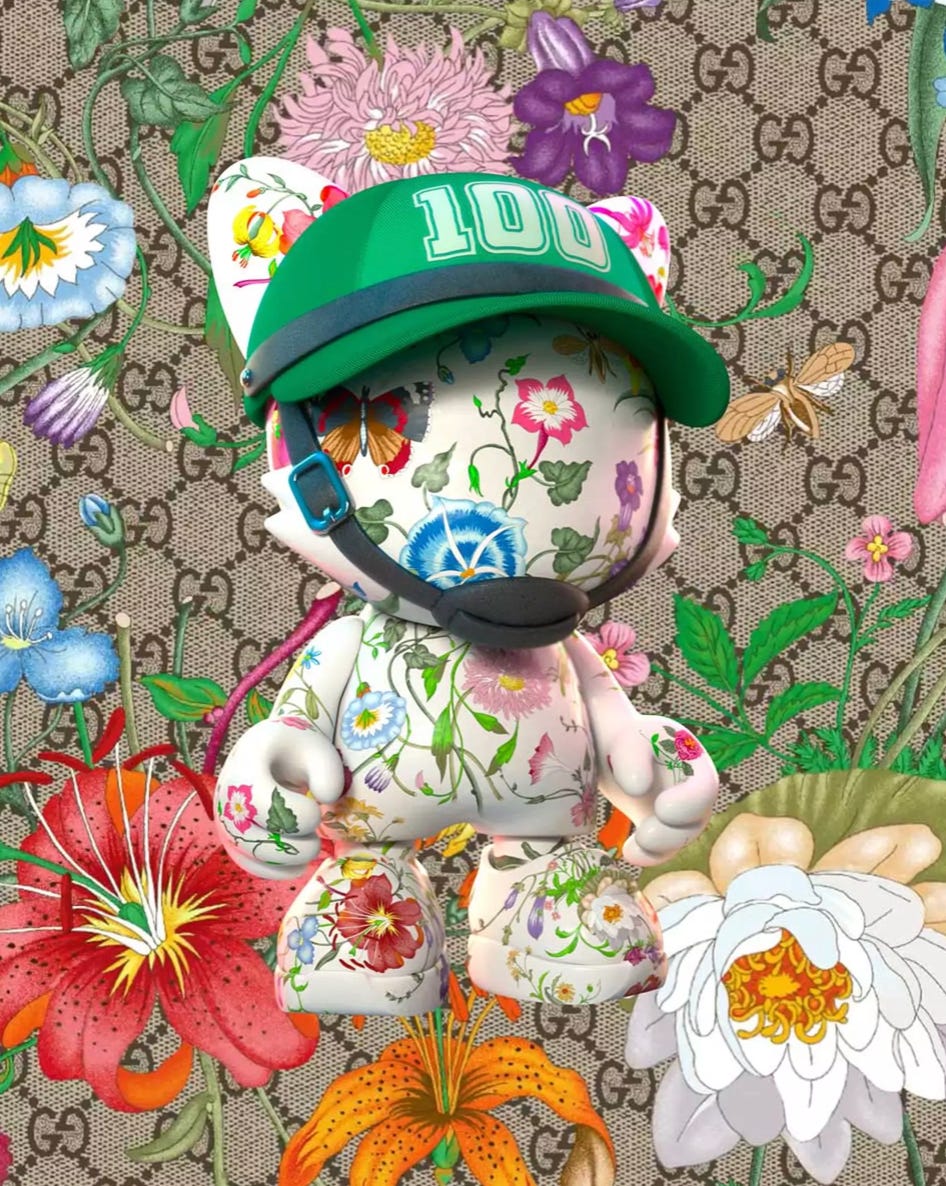NFTs, or non-fungible tokens, seem to be everywhere. From Gucci to Charmin, big brands have hopped on the bandwagon, with some of these efforts seeming to make more sense than others. The more we explored ways that NFTs could impact the fashion industry (and to be clear, we think they will!), the more we realized that none of those impacts could start until consumers understood what they are and the main ways they can be used. For simplicity, we’ll start at the beginning.
NFTs Began as Digital Objects
NFTs exploded on the scene as digital objects, which you’ve most likely encountered in the forms of art and images circulating on Twitter and the rest of the internet. You can deploy a Pudgy Penguin as your image on Slack, or flaunt a one-of-a-kind skin in Decentraland. For some of these digital artworks, in addition to enjoying it now, there is the potential of a profit when reselling on the secondary market later. (If this sounds a lot like buying a Chanel medium classic flap for $5,800 at the Chanel boutique in 2019 and selling it in the secondary market in 2022 for $7,600, that’s because it is.)
Yes, Everyone Can See the Digital Object… But That’s Not the Point
While you own it, the image exists in a visual that can still be seen and enjoyed by others, causing many to question the value of these NFTs. Yes, anyone perhaps can see it or screenshot it — but not anyone can own it.
There are many parallels in our current economy. Why buy a genuine Chanel boy bag versus a super-fake version of the Chanel boy bag for a fraction of the price? Why buy and insure a real Picasso if you leave it in storage or, perhaps even more confounding, loan it out to museums for others to see… for free? Because the ownership of the genuine article is the point. Basically, just like a $10,000 handbag, owning an NFT is a way to flex.
NFTs Evolved to Mark Landmark Moments
Digital-only NFTs also allow individuals to “own” landmark moments in history in the same way that they can own physical historical objects. For example, you could buy a rare, first-edition copy of Moby Dick. Others can still read and enjoy the same text on their Kindle (for free!), but the market has determined that there is particular value in the authenticity of an original copy. In much the same way, while we can all read Jack D'Orsay's inaugural tweet, only one person can actually own it — and now a Malaysia-based businessman does, thanks to its NFT.
But for those who still aren't convinced that there’s a future in joining a community of cartoon penguins or staking claim to the first tweet from an ousted CEO, there’s another use case for NFTs that’s a little more rooted in what my mom would call “the real world.” It blends the digital with the physical to create a “phygital” approach. Stay tuned for part 2!
PS: Speaking of moms, here’s another reason to be thankful that Kris Jenner isn’t yours.






I would love to see a recommendation of some top NFT marketplaces (especially for NFT’s by fashion brands). Looking forward to Part 2!